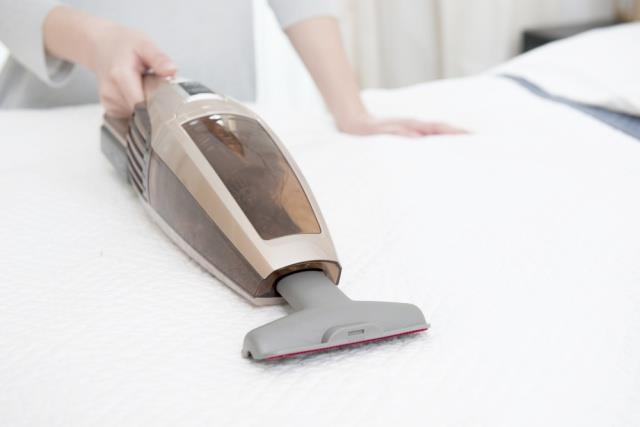Rotating and flipping your mattress is not the only important thing it needs to last its full lifespan. Mattresses are home to bacteria, germs, mould and mildew that can slowly eat away at the mattress materials and cause allergies.
Tihara Baker, Relationship Manager for Engel & Völkers Southern Africa, says it is advisable to have it cleaned professionally from time to time, though cleaning it yourself now and again is better than not at all.
She says it’s important that when you clean your mattress to do it with proper cleaning products.
Step 1: Vacuum it
Vacuum all the overlapping, narrow paths and the sides of your mattress to get rid of any dirt, especially pet hair and dust that has accumulated over time.
Step 2: Get the stains out
Mattresses typically acquire three types of stains: blood, urine and other fluids.
- Dried blood stains can be treated by mixing the following ingredients to make a paste: 1/4 cup of hydrogen peroxide (3%) mixed with a tablespoon of liquid dishwashing soap and table salt.
To get rid of these blemish, lightly spread this onto the stain and allow it to dry before scraping the residue off. Dab at any remaining stain with a white cloth dipped into hydrogen peroxide and rotating the cloth as the stain lifts off. Using a white cloth prevents any dye transfer from the cloth to the mattress.
- To treat urine stains, dissolve three tablespoons of baking soda in 236ml of hydrogen peroxide and add a drop or two of liquid dishwashing soap. Dab this solution onto the spot and be careful not to drench your mattress.
If the stain persists, wait until the area is dry then whisk together three tablespoons of dry laundry detergent powder and one tablespoon of water to make a dry foam.
Lightly spread this on the stain and let it sit for 30 minutes. Scrape the dried paste away with a spoon then use a white cloth dipped into hydrogen peroxide to remove any stubborn bits of paste. Once done, vacuum the area.
- Other bodily fluids like vomit can be removed by blotting the stain with undiluted, unscented household ammonia, but take care not to drench your mattress.
Wipe the area with a clean, damp cloth and sprinkle the spot with baking soda to neutralise the odour and pull out any lingering moisture. Let this dry before vacuuming the area thoroughly.
Step 3: Deodorise it
Over time, sweat can build up on your mattress. To rid your mattress of foul odours, sprinkle it well with baking soda and gently rub it in with a scrub brush, so it gets into the mattress fabric.
Let the baking soda sit for at least 10 minutes, and then sprinkle another light layer of baking soda over the entire surface and let it sit for a couple of hours. This will absorb any excess odour or liquid from the stain removal process, and leave your mattress smelling fresh and clean. Once done, vacuum the area thoroughly.
Step 4: Flip mattress and repeat steps 1-3










